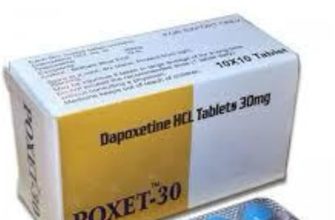Monitor serum sodium levels closely in patients receiving furosemide, especially those with pre-existing conditions like heart failure or cirrhosis. Regular electrolyte checks are vital for early detection of hyponatremia. Aim for frequency based on individual patient risk factors and clinical presentation.
Furosemide’s potent diuretic effect increases the risk of hyponatremia, a condition characterized by abnormally low sodium levels in the blood. This complication arises from increased sodium excretion exceeding intake, leading to fluid and electrolyte imbalances. This risk is amplified in patients with reduced fluid intake or impaired renal function.
Implement preventative measures by ensuring adequate hydration. Encourage patients to consume sufficient fluids, adjusting recommendations according to individual needs and the severity of the diuretic effect. Dietary sodium adjustments may also be necessary, guided by laboratory results and clinical judgment. Consider alternative diuretics if hyponatremia develops despite these precautions. Close monitoring and proactive management significantly mitigate the risk of severe complications.
- Furosemide and Hyponatremia: A Detailed Look
- Understanding Furosemide’s Mechanism and its Impact on Sodium Levels
- Sodium Excretion and Hyponatremia
- Factors Influencing Sodium Levels
- Monitoring and Management
- Risk Factors for Hyponatremia in Patients Taking Furosemide
- Underlying Medical Conditions
- Other Contributing Factors
- Monitoring and Prevention
- Clinical Presentation and Diagnosis of Furosemide-Induced Hyponatremia
- Symptoms
- Diagnosis
- Further Investigations
- Important Note:
- Management and Prevention Strategies for Furosemide-Related Hyponatremia
Furosemide and Hyponatremia: A Detailed Look
Furosemide, a potent loop diuretic, increases sodium excretion, thus posing a risk for hyponatremia (low blood sodium). This risk is amplified in certain patient populations, including the elderly and those with pre-existing conditions like heart failure or cirrhosis.
Careful monitoring of serum sodium levels is crucial, especially during initiation and dose adjustments. Regular blood tests are recommended, frequency depending on individual patient factors. Clinicians should adjust furosemide dosage based on these results and clinical presentation, aiming to minimize sodium loss while maintaining desired diuretic effect.
Patients on furosemide should be educated about symptoms of hyponatremia, such as nausea, confusion, and muscle weakness. Prompt reporting of these symptoms is paramount. Adequate hydration is vital, although excessive fluid intake may exacerbate the problem. A balanced dietary approach, providing sufficient sodium, may also play a role in mitigating the risk.
Concurrent medications can interact and increase hyponatremia risk. Interactions with other diuretics, antipsychotics, and some antidepressants should be carefully considered. Clinicians should review the patient’s complete medication list, actively seeking potential drug interactions. The decision to prescribe furosemide should account for the overall clinical picture and potential risks.
Alternative diuretics, such as thiazides or potassium-sparing diuretics, may be considered in patients at high risk for furosemide-induced hyponatremia. However, each alternative carries its own set of potential side effects, and the choice should be individualized.
Regular assessment of fluid balance, alongside serum sodium levels, provides a comprehensive view of the patient’s hydration status and helps in making informed treatment decisions. This holistic approach is key to managing furosemide therapy and preventing hyponatremia.
Understanding Furosemide’s Mechanism and its Impact on Sodium Levels
Furosemide, a potent loop diuretic, primarily works by inhibiting the sodium-potassium-chloride cotransporter (NKCC2) in the thick ascending limb of the loop of Henle. This inhibition prevents the reabsorption of sodium, potassium, and chloride ions back into the bloodstream. Consequently, more sodium, along with water and other electrolytes, is excreted in the urine.
Sodium Excretion and Hyponatremia
This increased sodium excretion is the key mechanism by which furosemide can lead to hyponatremia, a condition characterized by abnormally low sodium levels in the blood. The severity depends on several factors, including the dose of furosemide, the patient’s overall fluid status, and the presence of other underlying conditions.
Factors Influencing Sodium Levels
Several factors modulate furosemide’s impact on sodium levels. For instance, patients with low blood volume or those experiencing significant fluid loss are at higher risk of developing hyponatremia. Pre-existing kidney or liver disease can also exacerbate this risk. Proper hydration is crucial in mitigating the risk of hyponatremia associated with furosemide.
| Factor | Impact on Sodium Levels |
|---|---|
| Furosemide Dose | Higher doses increase sodium excretion, raising hyponatremia risk. |
| Fluid Status | Dehydration significantly increases the risk. |
| Kidney Function | Impaired kidney function can worsen sodium loss. |
| Liver Function | Liver disease can affect electrolyte balance. |
Monitoring and Management
Regular monitoring of serum sodium levels is crucial for patients receiving furosemide, especially those in high-risk groups. Adjusting the dose of furosemide, providing supplemental sodium, and correcting underlying fluid imbalances are common management strategies for preventing or treating furosemide-induced hyponatremia. Close collaboration between physician and patient is essential for optimal management.
Risk Factors for Hyponatremia in Patients Taking Furosemide
Careful monitoring is key. Patients with pre-existing conditions significantly increase their risk of furosemide-induced hyponatremia. This includes individuals with cirrhosis, heart failure, and kidney disease. These conditions often impair the body’s ability to regulate sodium levels.
Underlying Medical Conditions
Cirrhosis restricts the liver’s function in sodium regulation, making patients more vulnerable. Heart failure can lead to fluid overload, which furosemide aims to correct; however, overly aggressive diuresis can precipitate hyponatremia. Kidney disease, particularly chronic kidney disease, compromises sodium excretion control, increasing the likelihood of hyponatremia.
Other Contributing Factors
Age is a significant factor. Older adults are more susceptible to hyponatremia due to decreased thirst sensation and impaired renal function. Similarly, low sodium intake combined with furosemide’s diuretic effect exacerbates the risk. Vomiting and diarrhea further deplete sodium stores, increasing vulnerability. Excessive water intake, even without other risk factors, can overwhelm the body’s ability to maintain sodium balance, especially when coupled with furosemide’s sodium-excreting effects. Finally, concurrent medication use, such as certain antidepressants or antipsychotics, can potentiate hyponatremia.
Monitoring and Prevention
Regular blood sodium level checks are necessary, particularly in high-risk individuals. Adjusting furosemide dosage based on individual responses and sodium levels is paramount. Dietary sodium intake should be assessed and potentially supplemented, if appropriate, under medical supervision. Hydration management must be carefully considered, balancing fluid intake with sodium levels.
Clinical Presentation and Diagnosis of Furosemide-Induced Hyponatremia
Furosemide-induced hyponatremia often presents subtly. Patients may initially be asymptomatic, or experience mild symptoms like fatigue, nausea, or headache. More severe cases can lead to confusion, seizures, or coma. Early recognition is key.
Symptoms
- Mild: Fatigue, nausea, headache, muscle weakness
- Moderate: Confusion, lethargy, ataxia
- Severe: Seizures, coma
The severity of symptoms correlates poorly with the sodium level itself, making vigilance crucial.
Diagnosis
Diagnosis hinges on a low serum sodium concentration (<135 mEq/L) in the context of furosemide use. Consider these points:
- Measure serum sodium: This is the cornerstone of diagnosis. Obtain a blood sample to determine the exact sodium level.
- Assess fluid status: Evaluate for signs of hypovolemia (dehydration) or hypervolemia (fluid overload). This helps differentiate between different types of hyponatremia.
- Review medication history: Confirm furosemide use, dosage, and duration. Note any other medications that could contribute to hyponatremia, such as diuretics or antipsychotics.
- Assess urine osmolality: This helps determine whether the hyponatremia is caused by a problem with water excretion or sodium excretion.
- Consider other causes: Rule out other potential causes of hyponatremia, such as SIADH (syndrome of inappropriate antidiuretic hormone secretion), adrenal insufficiency, or hypothyroidism.
Further Investigations
Depending on the patient’s presentation and clinical picture, further tests such as urine electrolytes, plasma osmolality and renin levels might be necessary to clarify the etiology and guide treatment.
Important Note:
Prompt recognition and management are critical to prevent severe complications. Early intervention is crucial for optimal patient outcomes.
Management and Prevention Strategies for Furosemide-Related Hyponatremia
Monitor serum sodium levels regularly, especially during initiation and dose adjustments of furosemide. Frequent monitoring allows for early detection of hyponatremia.
Reduce furosemide dosage if hyponatremia develops. A lower dose may adequately manage fluid overload while minimizing sodium loss. Consider alternative diuretics if necessary, such as those with less impact on sodium excretion.
Increase dietary sodium intake cautiously. This strategy should be guided by individual needs and closely monitored by medical professionals to avoid sodium overload. A dietitian can assist in creating a safe and appropriate plan.
Administer intravenous saline solutions when severe hyponatremia occurs. The rate and type of saline solution depends on the severity of hyponatremia and should be determined by a physician.
Ensure adequate fluid intake. This helps prevent concentrated urine and excessive sodium excretion, reducing the risk of hyponatremia.
Closely monitor patients with conditions increasing hyponatremia risk, such as heart failure, cirrhosis, and renal insufficiency. These patients require more frequent sodium level checks and may benefit from prophylactic sodium supplementation.
Educate patients on the potential side effects of furosemide and the importance of reporting symptoms such as fatigue, confusion, or muscle weakness, which may indicate hyponatremia.
Remember: Management of furosemide-related hyponatremia requires a tailored approach based on individual patient factors. Always consult with a healthcare professional for diagnosis and treatment.
Disclaimer: This information is for educational purposes only and does not constitute medical advice. Always consult a healthcare professional for any health concerns.





